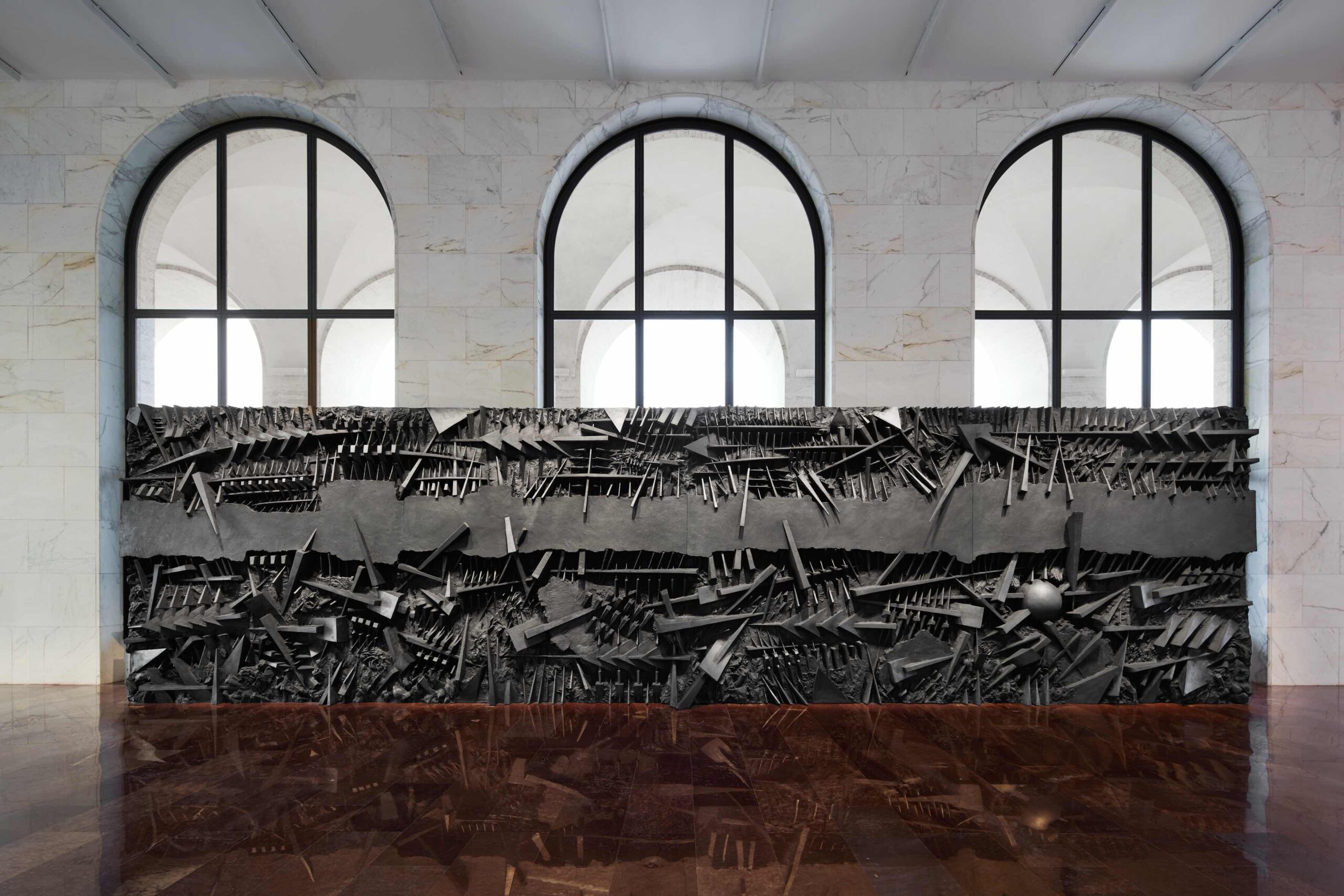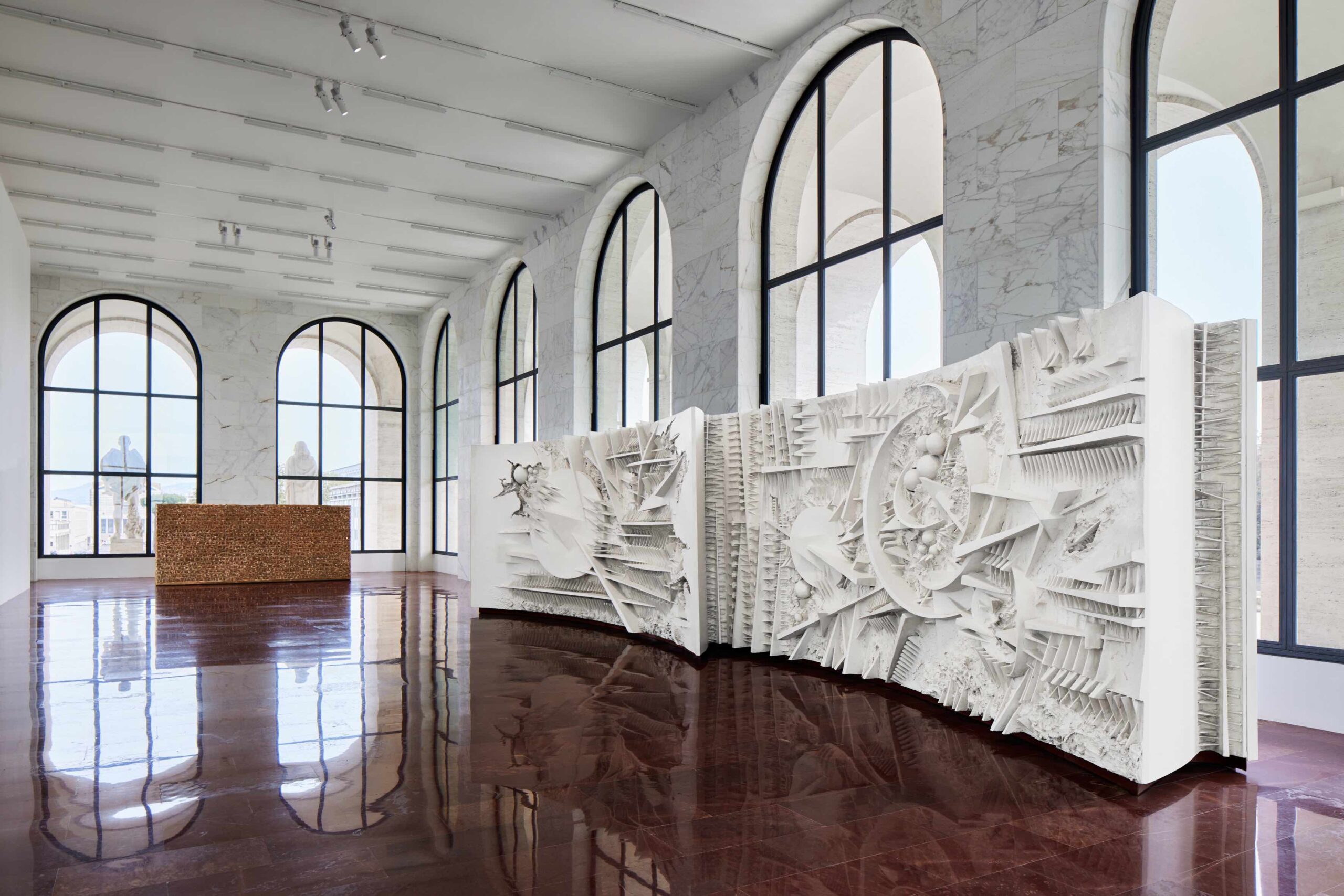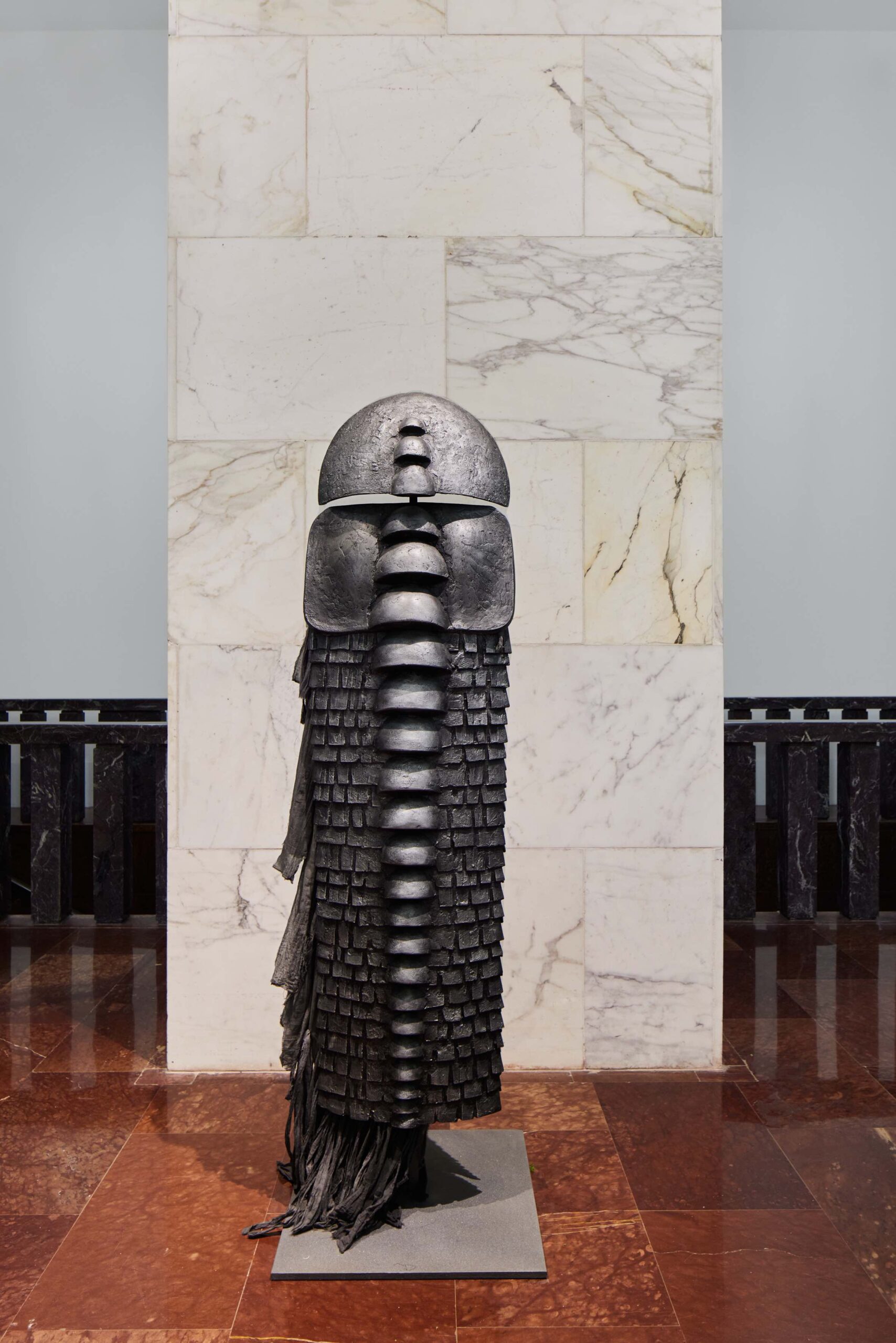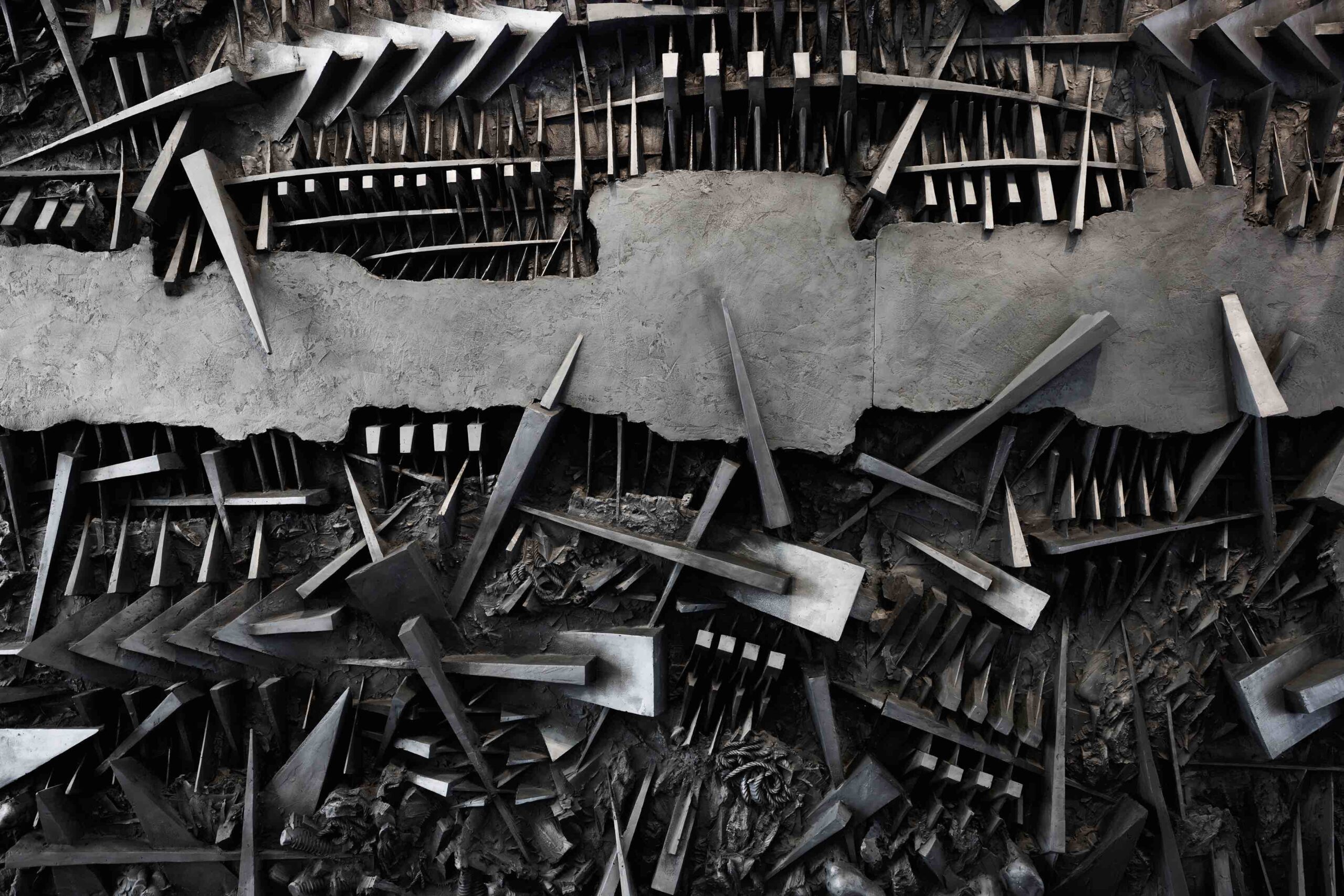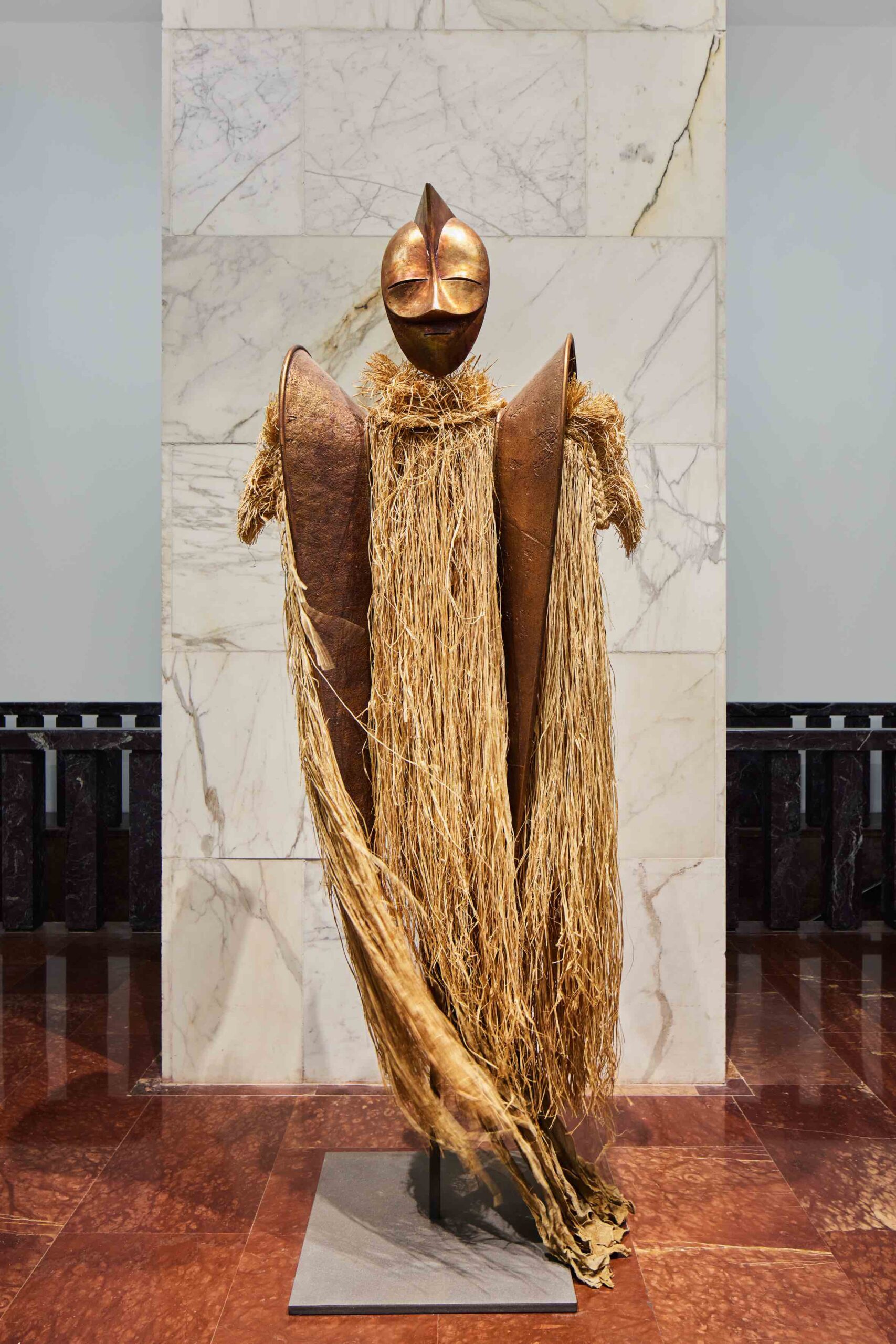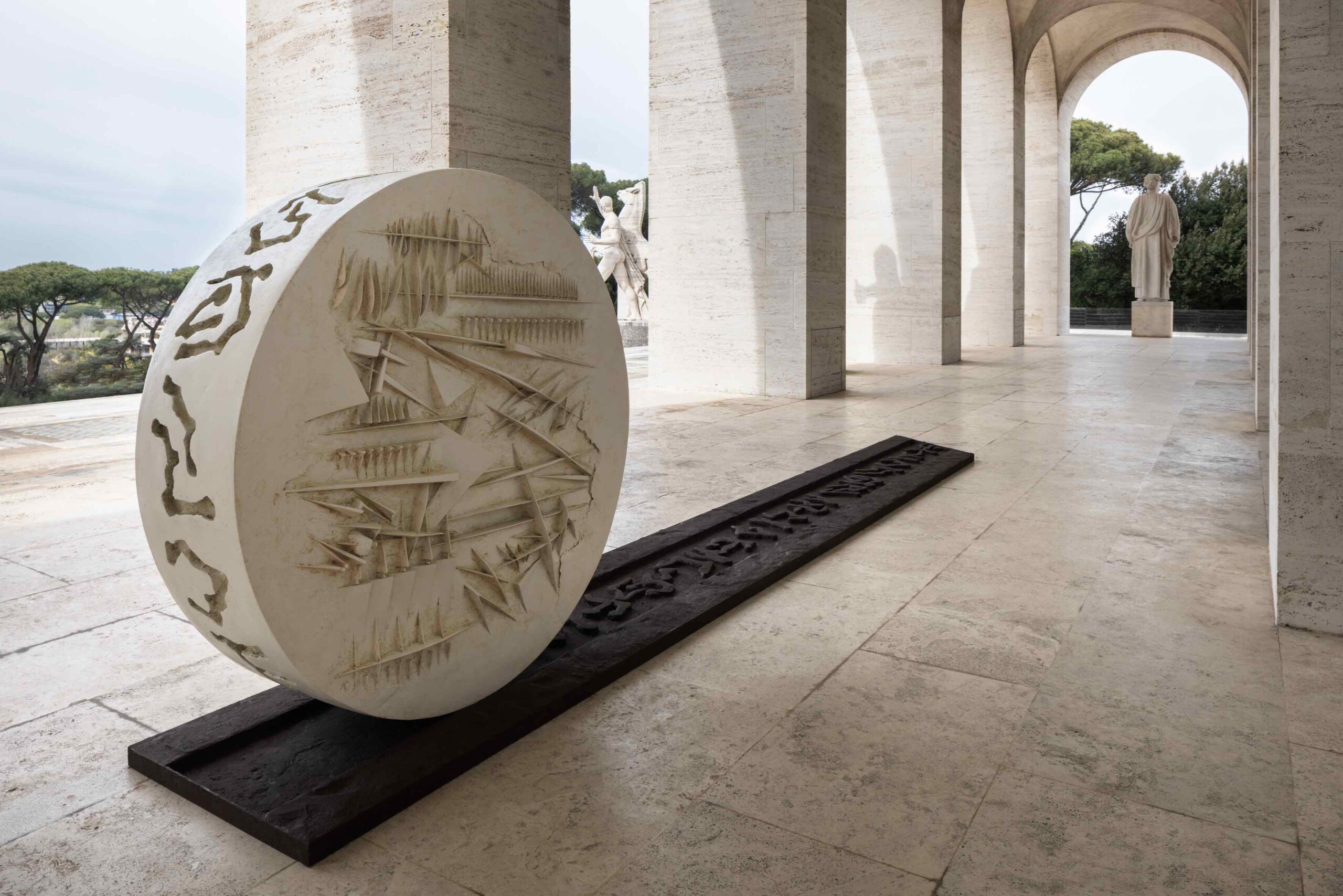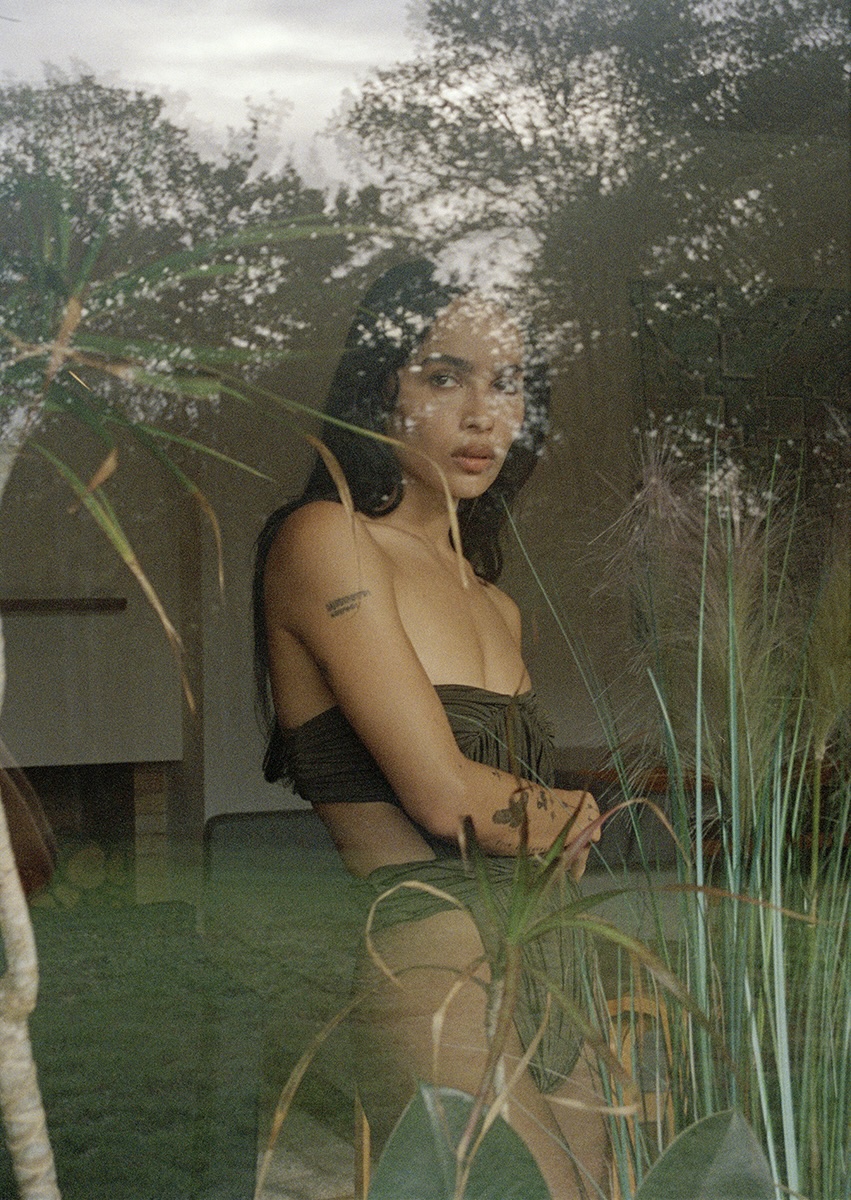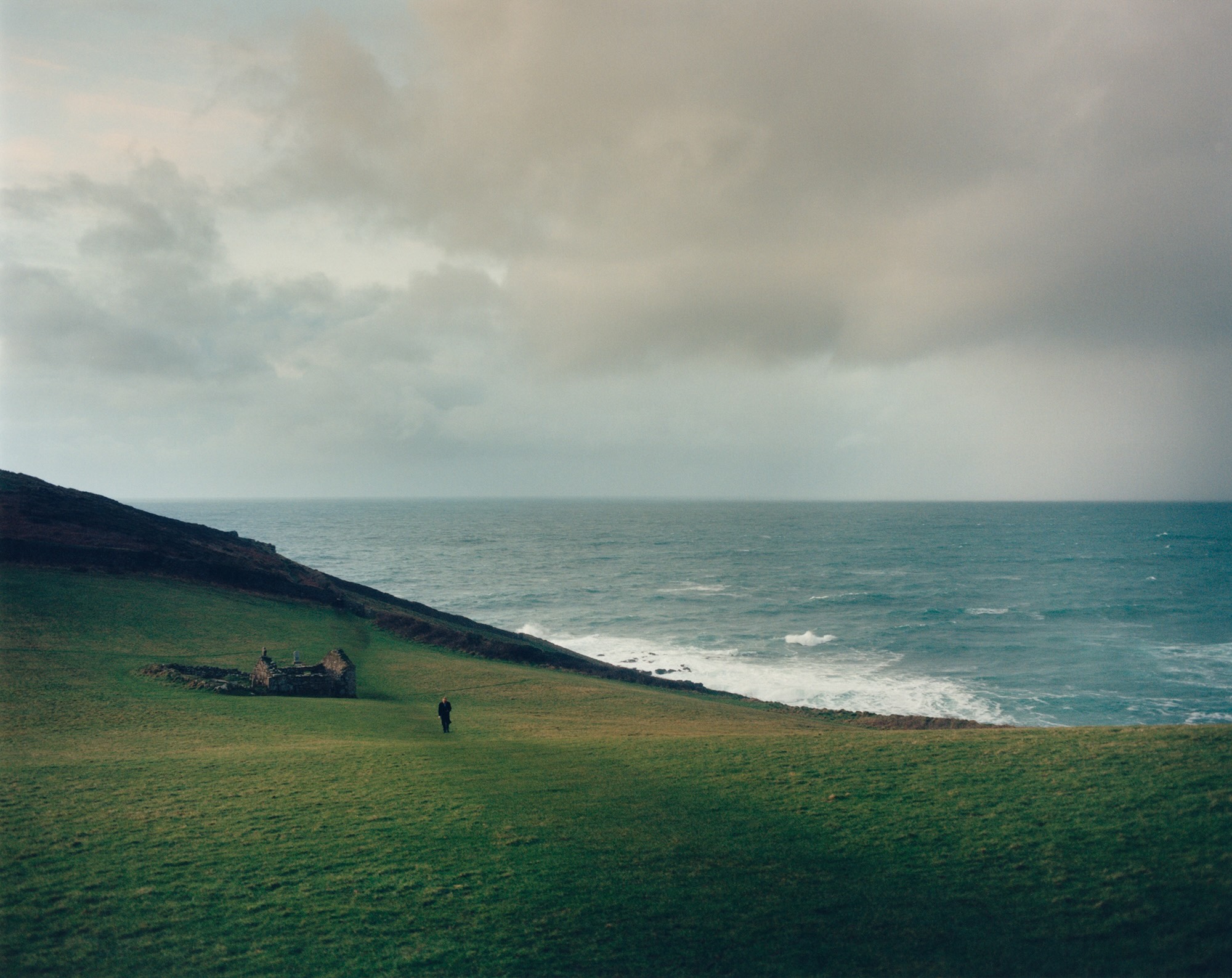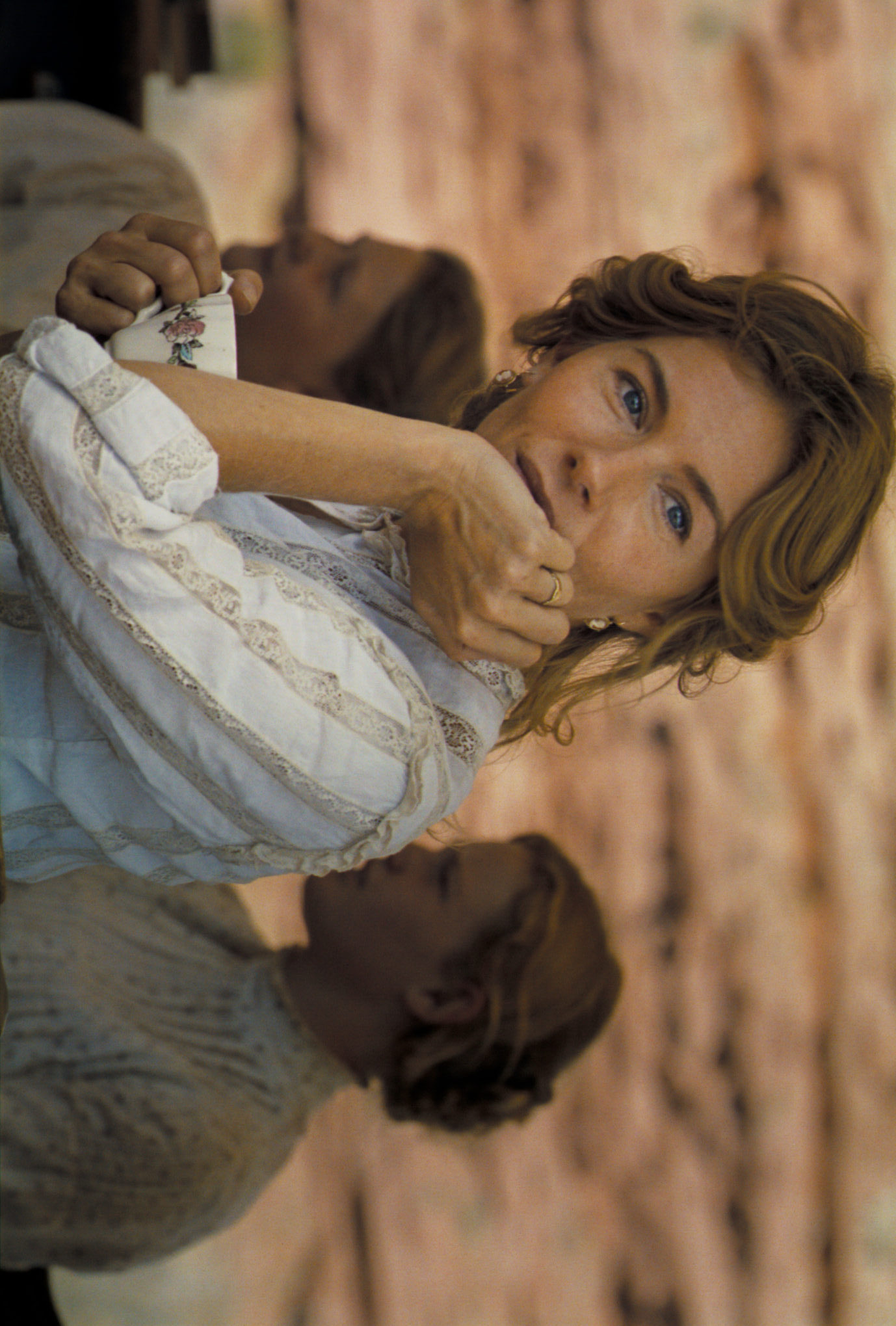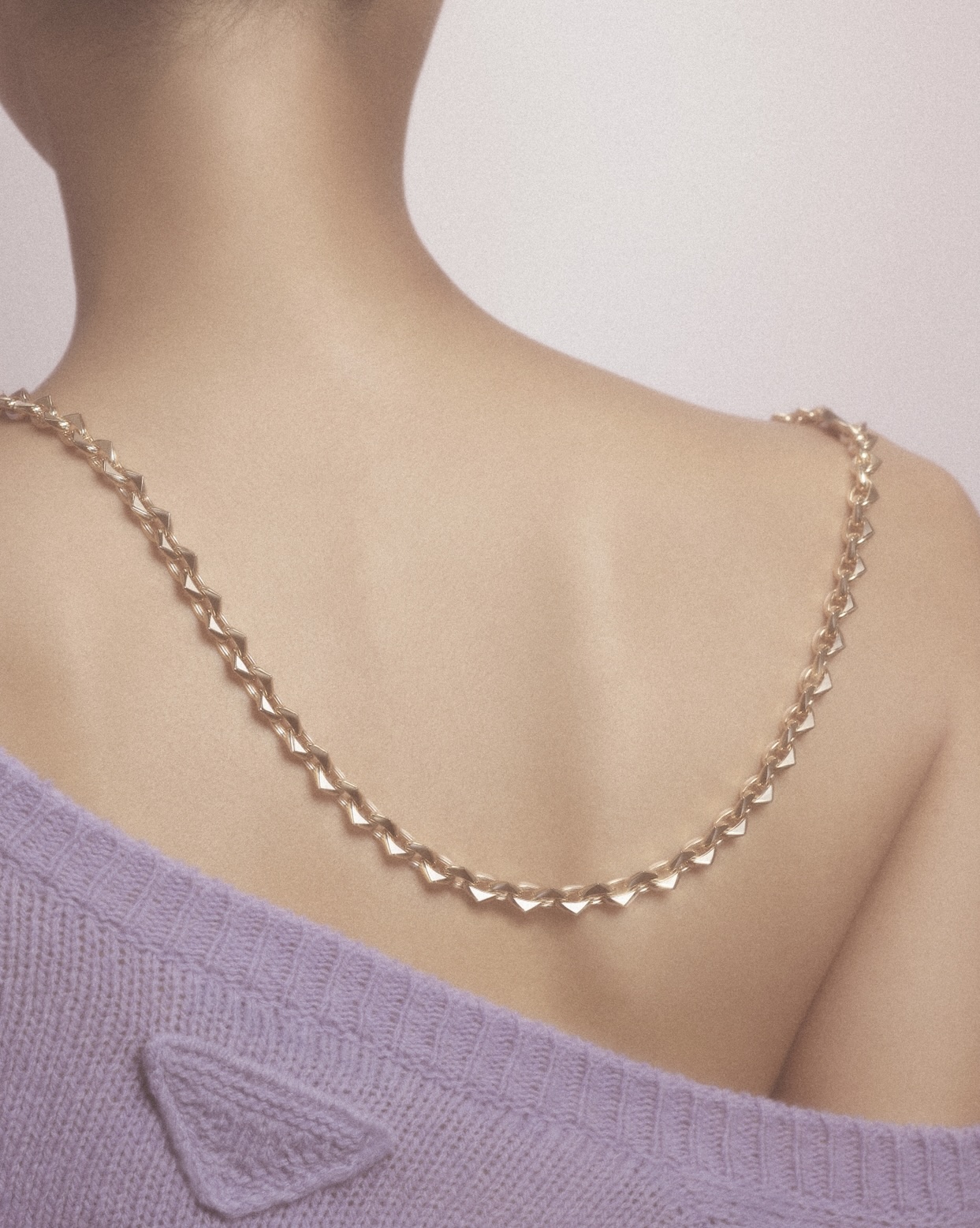It all begins in Rome, at the Palazzo della Civiltà Italiana, where Fendi meets the grandeur of Italian sculptor Arnaldo Pomodoro.The collaboration with the Fondazione is part of a much broader project that the Italian Maison has been conducting for some years now, with the intention of combining respect for the historical legacy with the support and dissemination of contemporary artistic languages. The relationship between the brand and the Foundation was born with Fendi’s establishment in the space of Via Solari in Milan, the former headquarter of Arnaldo Pomodoro, where one of the most significant and representative works is still kept. The retrospective appears as an autobiographical “theater”, real and mental at the same time, historical and imaginative, inserting the public in a path that spans seventy years of the artist’s research and work. A true marriage of art and fashion, architecture and history, in search of new forms of collaboration based on sustainability and innovation. A balance is created between the works in the exhibition and the environment that commemorates it, the indoor and outdoor spaces of the Palazzo: about thirty works created since the late 1950s and a series of archival materials dialogue intensely with the architecture of the Colosseo Quadrato, creating a connection between the design dimension and its realization.
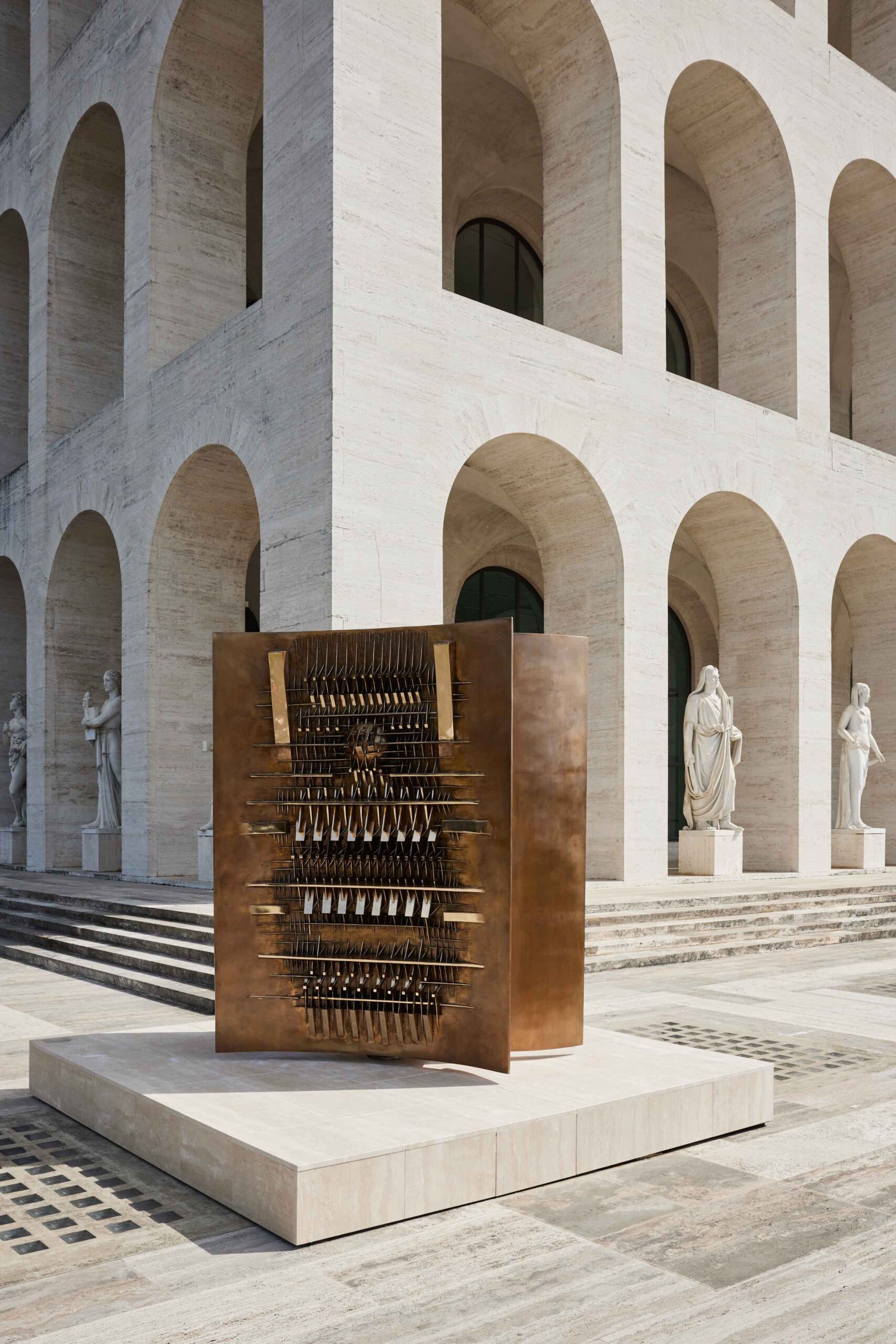
Fendi and Fondazione Arnaldo Pomodoro announce the launch of a multi-year partnership with the mission and vision of both find share expression in the celebration of art.
Sculpture in Arnaldo Pomodoro’s life is a constant that he never abandons; it mirrors the intimacy of the artist himself. The exhibition in collaboration with Fendi is a visual autobiography that allows the audience to go beyond the mere observation, but to deeply understand the language and grandeur of his works throughout history. Photographs, documents, sketches and drawings support the major works and illustrate the research and study behind them: Pomodoro focuses on deforming and deconstructing geometric solids to discover what is enclosed within them. The analysis of figures such as the sphere or the cube continues deeper, finding a relationship with the human being and the need to explore the profound interior at the same time. Il Grande Teatro delle Civiltà explores the interconnection between visual and performing arts, showing the audience multiple references to those archaic, ancient, modern, and probably also fantastic civilizations from which Pomodoro’s work constantly draws inspiration. The forms and materials are both a memory of the past and a vision of the future, giving a new image to our knowledge, to our imaginaries, to the experience of time and space that belongs to us, to history and myth. The exhibition, curated by Lorenzo Respira and Andre Viliani, starts outside the building, where at the four corners are respectively placed the sculptures Forme del mito (1983): the works fit into the balance created between the natural landscape and the surrounding urban community, redesigning and giving a whole new meaning to the Palace, which appears as interpretable, constantly changing. The audience heads towards the interior of the Colosseo Quadrato , where already in the entrance vestibule it encounters two costume-works by Pomodoro, created by the latter for two theatrical performances. They arise by presenting different materials, some sculptural and others simpler, such as raffia, to recall the cultures of archaic Greece as well as African and Asian traditions.
The audience’s journey to discovering Arnaldo Pomodoro follows the logic of a play: the exhibition continues in two mirrored rooms and a third to connect, like two acts with an interlude. Set up symmetrically, Le battaglie (1995), in black, and Movimento in piena aria e nel profondo (1996-1997), in white, give new life to the main rooms. The former evokes a Renaissance masterpiece by Paolo Uccello, while the latter represents sculptural action as “excavation within the complexity of things” that is solidified in the knowledge that it can “bend time and space.” Alongside these is Continuum (2010), a symbolic work that appears to the public as a kind of outline presenting the codes and inventory of all his writing. Like an exhibition within an exhibition, in the same space Arnaldo Pomodoro’s design and documentary materials recall the atmosphere of the great sculptor’s studio and the spirit of his archive. The journey concludes on the third-floor loggia with Osso di Seppia (2011-2021), the symbolic matrix of all the artist’s works, which initiated his sculptural research by carving the very cuttlefish bone, becoming an emblematic element of it. Il Grande Teatro delle Civiltà is a special opportunity to learn more about the artist and his relationship with the eternal city, but it is at the same time the starting point for a broader experience aimed at discovering all of Pomodoro’s works located in Rome and around the world. The public through the path creates a connection with the sculptor’s career, with his private life through sketches and drawings, and perceives the importance of the historical legacy in a contemporary setting.
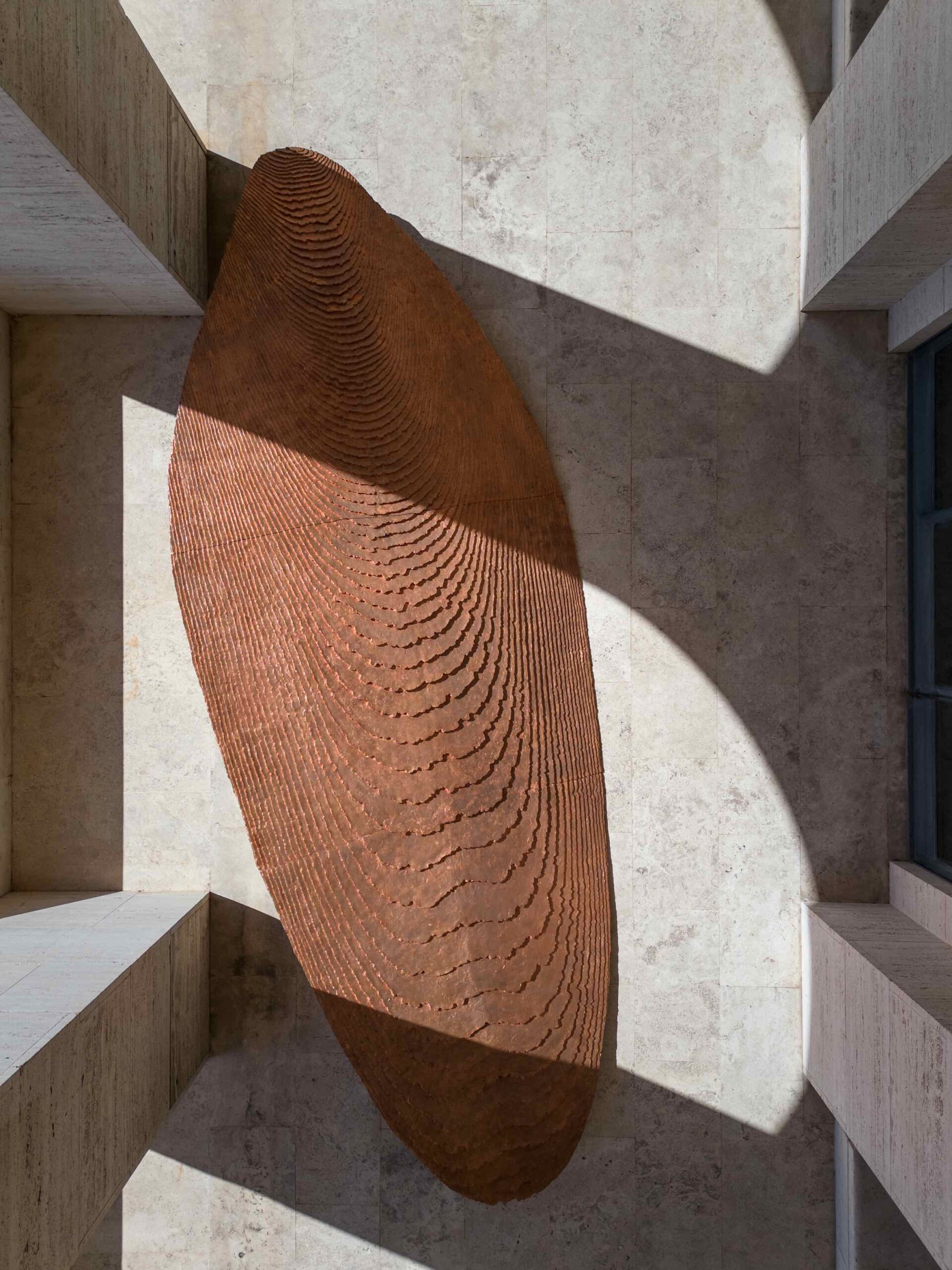
Il Grande Teatro delle Civiltà explores the interconnection, in Pomodoro’s practice, of visual and scenic arts and highlights the relationship between planning component of the work and its creation.
The relationship between the Maison and the Fondazione develops and continues in the pure world of fashion with the interpretation of Fendi’s iconic Peekaboo bag, created by Silvia Venturini Fendi. Arnaldo Pomodoro takes part in the global Canvas Peekaboo project, joining the iconic artists, designers, and celebrities who, since 2014, have been engaged in the creation of unique pieces that bear witness to special events for the Maison. The sculptor not only revolutionizes the bag through his language, he questions the object itself, subjecting it to a transformation into something both mysterious and visionary: its peculiar shape might suggest a medieval shield, a mythological animal covered in sharp quills, or perhaps an exotic flower with long pistils.
For further information fondazionearnaldopomodoro.it.

